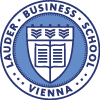[vc_row][vc_column][vc_column_text]Principal investigator: Martin Samek
Collaborators: IML 2013 Students
Client/cooperation partner: Österreich Werbung/Austrian National Tourist Office (ANTO)
Duration: June 2014 – May 2015
Objectives of the project
Students of the IML 2012 cohort successfully completed the project Tourism Product Development for an Ethno-religious Segment, which was a cooperation of Österreich Werbung/Austrian National Tourism Office (ANTO) and Lauder Business School. That project aimed at developing a strategy and derivative tourism products for the Austrian tourism industry focusing on ethno-religious segments and their special requirements and interests. The Austrian tourism industry and ANTO cooperate to create and promote Austria as a premiere tourism destination. This requires constant monitoring, assessment and evaluation of markets with high potential. Describing market segments according to their ethno-religious characteristics is an innovative approach, which takes into consideration, that the needs and wants of certain groups can be described and addressed by their ethno-religious heritage and lifestyle.
The group presented to the project sponsor, i.e. ANTO, eight target groups with high potential, namely Germany, France, Ukraine, Russia, Poland, Israel, and the U.S.
The recently completed project was an immediate spin-off of Tourism Product Development for an Ethno-religious Segment, which again was proposed by ANTO.
To further pursue these ideas, students of the IML 2013 cohort have developed marketable tourism products for the respective targets, this time focusing on urban tourism. An emphasis has been placed on all dimensions of the marketing mix.
Research methods
The above stated objectives have been achieved by an analysis of secondary tourism data retrieved from official statistics. A quantitative assessment of the already existing products helped subsequently to create a pool of potential partial products. Representatives from all parts of the supply- and distribution chain have been asked for their evaluation and expert opinion on such products’ potential. Based on the research above, final products with the highest market potential for different target groups have been identified. Furthermore these products have been thoroughly tested for their feasibility.
Outcome
In order to reach the project’s mission of mixing Viennese and Jewish culture for tourists travel packages for Jewish tourists from the United States of America have been designed, that will provide them the feeling of authentic Vienna and introduce them to the rich Jewish heritage. The group has developed two modular tourism products: the first features only Vienna, while the second includes Vienna, Prague and Budapest. Both packages combine Jewish heritage and Vienna’s authentic intercultural fabric.
These products address six key elements: Attractiveness, Expectations, Benefits, Functionality, Competition, and Reliability. They are designed to promote Vienna as a city that can offer many unique cultural features, including those of rich Jewish heritage and history. Whether classical or experimental theater, film or dance festivals, opera or operetta, exhibitions and concerts; no matter which season or how long one stays, there is certainly something exciting to discover in Vienna. Vienna has been synonymous with music for centuries, and was home to Mozart, Beethoven, Schubert and Johann Strauss, amongst many others. This outstanding musical heritage has been preserved, and through the centuries, Vienna has produced and nurtured world-famous artists. Vienna is also a city with a long Jewish tradition that recently people started to re-discover. The Jewish community in Vienna tries to preserve and emphasize the importance of Jews in Austrian history.
Research shows that such combined offers attract a well-established segment of better educated Jews and also non-Jews. Thus targeting this segment with above-average wealth the project at hand provides a detailed discussion of the marketing mix for the respective two products. It also developed a marketing strategy which can be summarized in a nutshell by its position statement: The coming together of hearts, meaning the rare opportunity when a Jewish family experiences the family history and heritage first-hand, i.e. not through stories, pictures or faded memories that were passed from parent to child. But it creates the opportunity to physically attend, watch, touch, feel, breath the history, and to finally connect a face to a name and, consequently, to a family.
[/vc_column_text][/vc_column][/vc_row]


Recent Comments